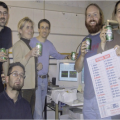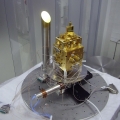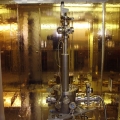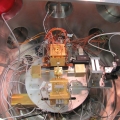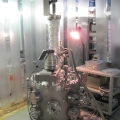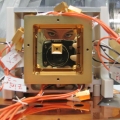A ground test of free-fall cannot reach the full eLISA / LPF sensitivity at the relevant time scales of 1000 or more seconds. However, a lightweight (hollow) eLISA-like TM suspended as a torsion pendulum element inside an eLISA-like GRS electrode housing provides a test bench for the surface forces that are perhaps the hardest to analyze from “first principles” calculations and thus most threatening to the eLISA sensitivity.
In Trento we have pioneered efforts to measure the femtoNewton surface forces relevant to free-fall inside realistic GRS hardware prototypes and have reached sensitivities that allow placing an upper limit of roughly 2 fm/s2 for the random RMS amplitude of TM acceleration from surface forces at 1 mHz. This is within a factor 2 of the LPF goal, and was critical in demonstrating the readiness for a space mission. It is also represents the current state of the art in small force measurement for the 100 gm class of test bodies.
Our lab measurements have also measured a number of key force noise sources for eLISA test masses, including:
- Detection of the Brownian motion (and proximity-effect damping) from residual gas impacts in vacuum conditions
- 100 pN/K-level thermal gradient coupling forces
- Stray potential fluctuations between different points on a single gold surface, with limits below 10 microV at mHz frequencies
- Electrostatic force gradients to well below the microN/m limit allowed for eLISA
- Electrostatic dissipation with loss-angles below 10-6
- The bipolar discharging properties of the suspended TM inside the GRS with the UV photoelectric discharge system.
The torsion pendulum lab represent a critical “ground companion” to complete the physical model of small force disturbances that will be a legacy of the LISA Pathfinder mission.


